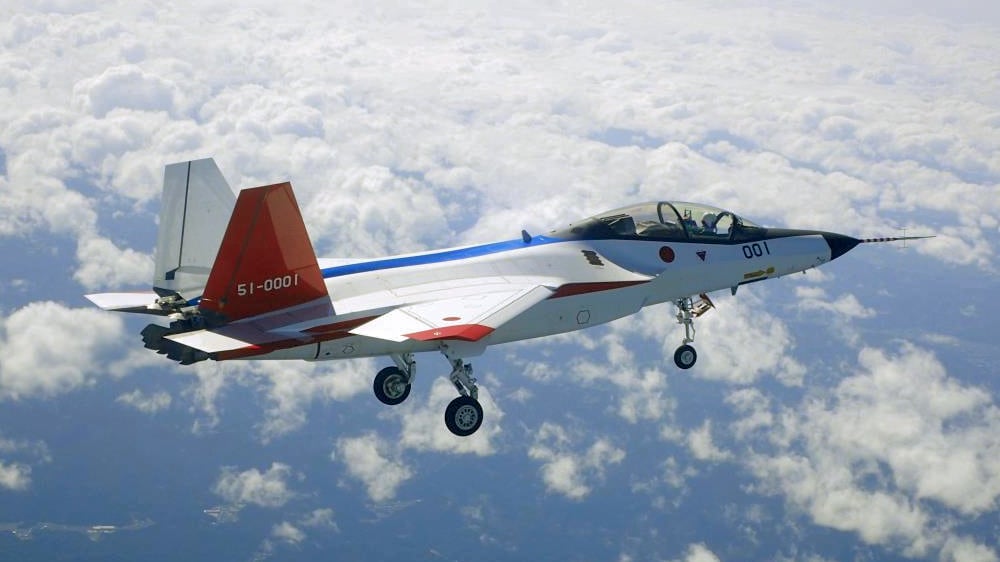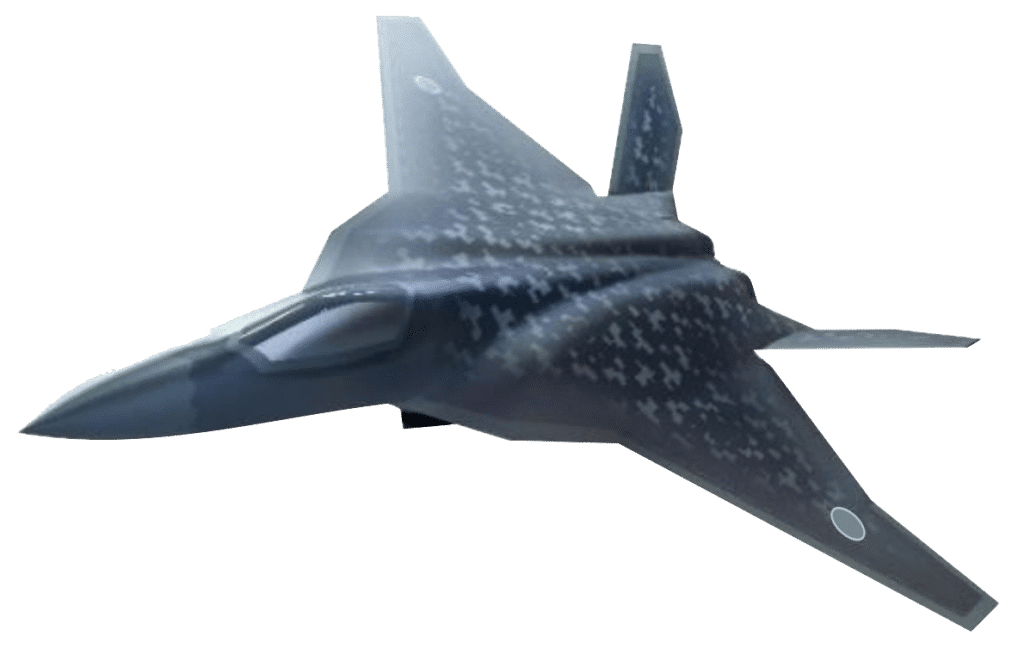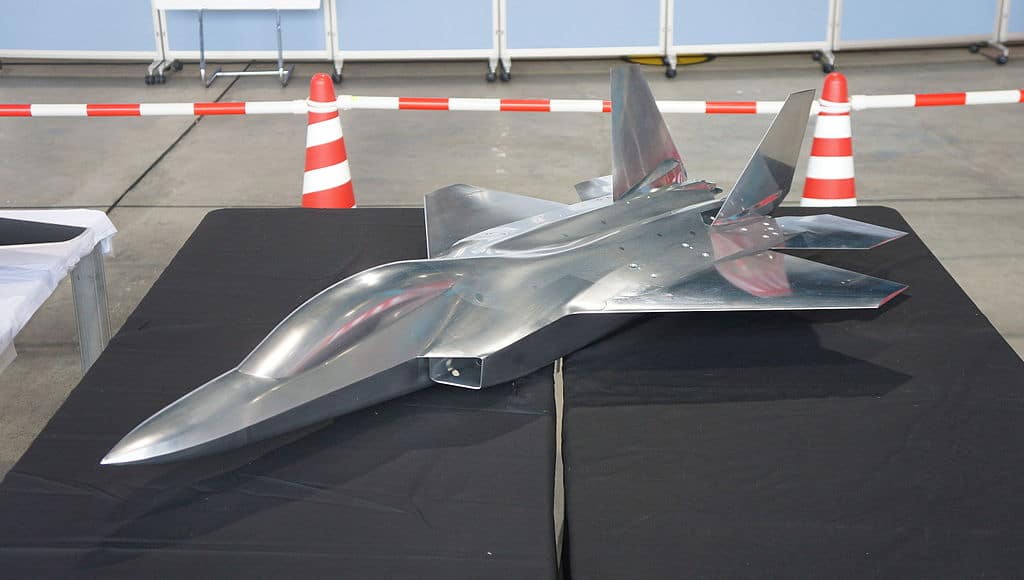Aviation
Meet Japan’s 6th Gen Fighter jet and its mind blowing features
When the United States rejected the sale of F-22 aircraft, Japan began work on a new 6th-generation fighter jet.
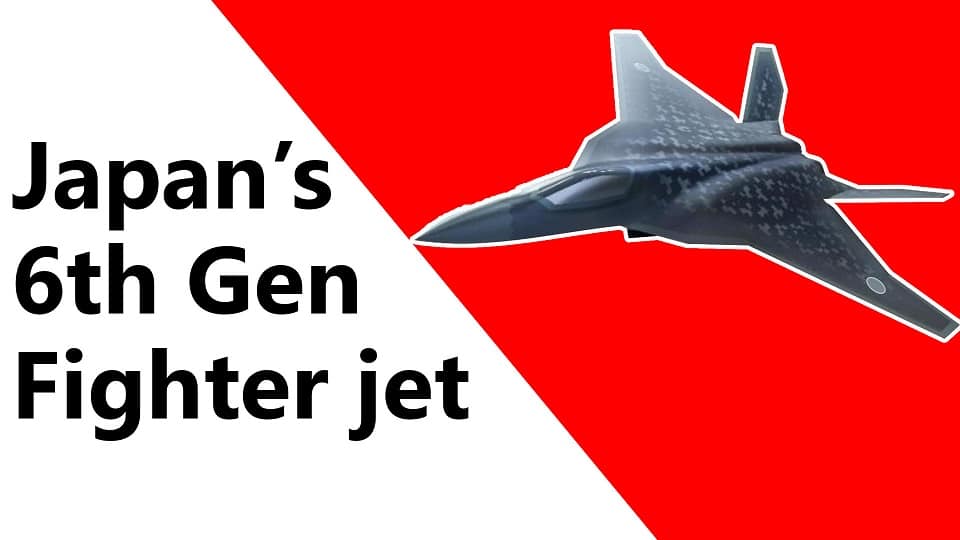
Welcome back to jetline marvel for another thrilling episode. As we all know Building Fighter jets is a difficult task for any aerospace producer. since it necessitates a great deal of material and technological expertise. But what if Japan, the world’s leading innovator in technological fields, creates its own fighter jet and that too a sixth-generation?
When the United States rejected the sale of F-22 aircraft, Japan began work on a new 6th-generation fighter jet.
We shall examine some of the fascinating details regarding this aircraft in this video..
1. The Japan FX scheme is pushed after the US rejected the F 22 for Japan.
The program began in 2009, but because the U.S. Congress forbade the export of the aircraft in order to protect its technological secrets, including its extensive use of stealth, Japan was forced to develop its own modern fighter that would be outfitted with stealth features and other cutting-edge systems.
Aircraft comparison Brazil’s KC-390 vs Japan’s Kawasaki C-2(Opens in a new browser tab)
The Mitsubishi Heavy Industries-built X2 is the first experimental Stealth technology demonstration for the sixth generation of aircraft. The prototypes and stealth technology are learned using this aircraft.
On April 22, 2016, the X-2 completed its first flight, taking off from Nagoya Airfield and landing at Gifu Air Field of the JASDF.
India’s $3 Billion MQ-9 Reaper Drones Deal With US In Advanced Stage(Opens in a new browser tab)
2. It has Fly-by optics feature and 3D vectoring thrust control.
Three paddles are located on each engine nozzle of this aircraft, which has 3D thrust vectoring identical to the system used on the Rockwell X31. That enables fast maneuverability for aircraft and supports multiple flight trajectories.
Additionally, the data is processed 100 times faster than with wires because of the demonstration of fly-by optics, a feature exclusive to this aircraft. It has benefited from immunity to electromagnetic interference.
Additionally, this aircraft has the ability to self-repair its flight controls, allowing it to autonomously detect faults or damage to its flight control surface. maintain, calibrate, and perform controlled flying.
3. The electric actuator is taking the place of the hydraulic one.
The flaps and other oscillate devices of fighter jets are typically operated by hydraulic actuators, however, Japan is utilizing electric actuators for the FX program. The hydraulic actuator takes up more room and places more restrictions on designs, whereas the electric actuator can be fitted to the design. enabling greater freedom in the aircraft’s body design. Body weight reduction and increased aircraft mobility are other benefits. The control, power, and leg/brake systems of the fighter are all equipped with electronic actuators.
4. Adhesive bondings are replacing fasteners.
It is also claimed that a new fighter aircraft level is being developed. The adhesive moulding will be replaced with fewer fasteners on this aircraft. by using adhesive molding to bind composite materials together, fasteners can be eliminated. The “integrated/fasteners structure” technology is the name given to this process. Heat shield technology is positioned around the engines to enable the application of aluminum alloys and carbon fiber reinforced polymer (CFRP) to minimize weight in the vicinity.
5. This aircraft will have the radar of the F35 version.
The F-X uses sensors that are already built into the aircraft to better detect stealth aircraft. The sensors consist of an infrared camera, a passive radio frequency (RF) sensor, and an active electronically scanned array (AESA) radar.
To defend against threats from aircraft, air-to-air missiles, and surface-to-air missiles, the F-X has an RF “self-defense” system. By being informed of the threat and instantaneously and worldwide sabotaging its radio waves, the system accomplishes both ESM and ECM. which sensor is most likely to be found in the wings and tail.
6. Its surface contains several unique coverings.
Most of the 5th gen fighter jets have a special coating on the surface since the FX also special coating. The stealth design will have serpentine air ducts and an internal weapons bay to reduce the amount of radar reflection. It also has a carbon-based material absorber which helps to reduce the detection range from radar threats by about half. It also has the metamaterial also used to reflect radio waves.
7. This engine is more compact but still powerful when compared to the GE F110 engine.
Axial-flow afterburning turbofan with a 6-stage high-pressure compressor and a 3-stage fan, the XF9-1 has dual redundant dual spool construction. The official thrust level for the prototype engine is “11 tonnes” (107 kN) The development of future fighter engines aims at a maximum thrust of 20 tonnes (196 kN)
The XF9 has a high combustion temperature of 1800 °C. It’s notable how little the XF9 is compared to how powerful it is. For instance, the General Electric F110 engine intake on the XF9 is 30% smaller than that on the F-2.
8. It’s claimed that the F-X is larger than the F-22.
The aircraft’s size suggests that the MoD wants it to have a very long range and a huge payload capacity. The Mitsubishi F-2 will be replaced by the next-generation F-3 or F-X, Japan’s first homegrown stealth fighter aircraft. It will be a twin-engine fighter with six internal weapons mountable. As The EuroAsian Times has stated, the fighter jet will complement the smaller F-35 aircraft. F-X, together with Chinese and Russian fighters, might be a generation ahead of those three. By 2035, it is anticipated to be fully functioning.
9. It will be equipped with contemporary armaments.
A microwave weapon will be mounted aboard the F-X to deflect approaching missiles. This aircraft has the ability to control drones and its drone system interfaces with that of the Boeing wingman drone system.
This will be a breakthrough in operating a greater range when compared to deploying drones that can be launched from an aircraft’s weapons bay to reach and target the adversary at a great distance.
10. It is looking for a global partnership to cover research expenditure.
It estimated $48 billion cost of the program. Japan is considering working together with the US and the UK. It may give the UK greater significance than the US for a number of reasons. As of mid-April 2019, several sources claim that the United States was willing to allow Japan access to portions of the F-35’s software in exchange for collaboration on the construction of the F-X fighter. The particular partnership for Japan’s FX program is still to be chosen, though.
A decision has not yet been made about Japan’s interest in helping India develop the AMCA fifth-generation fighter plane.

Aviation
All passengers killed in plane crash, after pilot let his children to control the plane

When boarding a plane, passengers entrust their safety to the skilled hands of the pilot. However, tragedy struck when one of the flight ended in disaster as all passengers lost their lives in a horrific plane crash.
In 1994, during a flight from Moscow to Hong Kong, tragedy struck as an Aeroflot relief pilot made a fateful decision. In a move that would have devastating consequences, the pilot invited his own children into the cockpit to play with the controls. Little did anyone know, this seemingly innocent gesture would lead to the loss of all 75 lives aboard the aircraft.
It was a seemingly innocent act that led to catastrophic results. The relief pilot, Mr. Kudrinsky, invited his two children, Yana, 12, and Eldar, 15, into the cockpit during the late hours of the night. Little did anyone know, this simple gesture would set off a chain of events that would end in tragedy.
Once in the cockpit, the children were allowed to sit in the captain’s chair and play with the controls, unaware that they should have been disabled as the plane was in autopilot mode.
Eldar, perhaps in a moment of curiosity or innocence, held the control column down for a mere 30 seconds. Yet, in those brief moments, the autopilot disengaged, thrusting the aircraft into manual control.
By the time the pilots regained their seats and attempted to regain control, it was too late. Despite their efforts to pull the plane out of a dive, they overcorrected, causing the flight to climb almost vertically, ultimately stalling it.
Final moment Flight 593 crash
In the final moments, as the pilots struggled to stabilize the aircraft, Flight 593 crashed into the Kuznetsk Alatau Mountain range in southern Russia, completely obliterating the plane and claiming the lives of everyone on board.
Investigations revealed a chilling truth: there was no evidence of technical failure. Instead, the crash was attributed to the unthinkable decision to allow inexperienced hands to manipulate the controls of a commercial aircraft.
The black box recording captured the harrowing sequence of events, providing a grim reminder of the human cost of a lapse in judgment. In just over two minutes, the lives of all on board were tragically short, leaving behind a legacy of sorrow and unanswered questions.
Aviation
American Airlines Flight Attendant Orders First-Class Traveler to use Economy Restroom
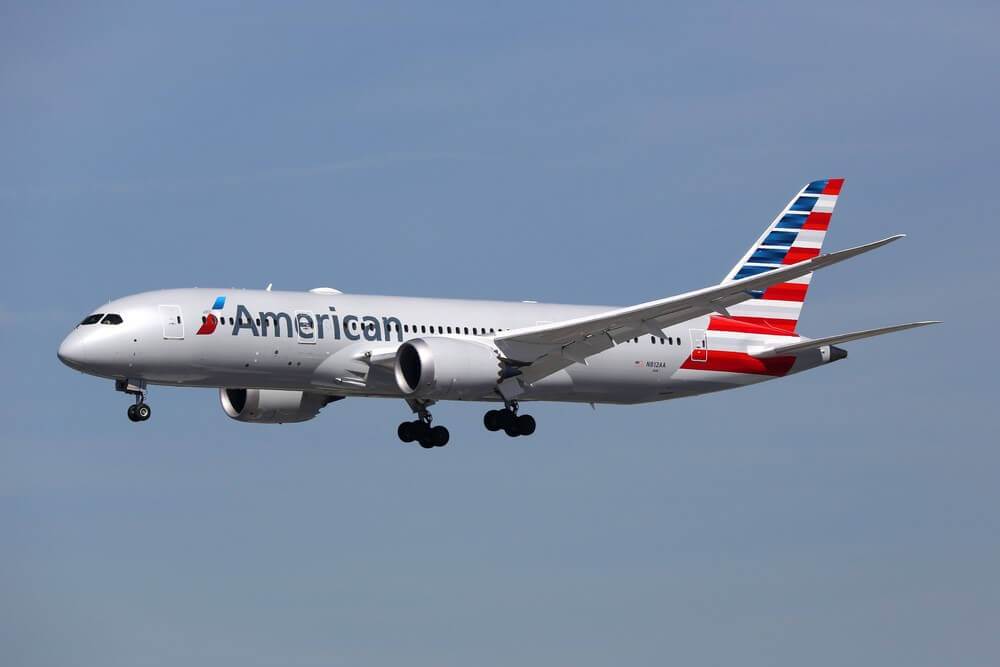
On a recent American Airlines flight from Chicago O’Hare to Phoenix, Pamela Hill-Veal, a retired circuit court judge, found herself at the center of a disturbing incident.
Despite traveling in First Class, she was directed by a flight attendant to use the Economy Class restroom, sparking allegations of racial discrimination. According to Hill-Veal, the ordeal began when she used the dedicated First Class lavatory during the flight. A flight attendant approached her, accusing her of slamming the door and issued a warning.
Despite remaining calm, Hill-Veal faced further confrontation when she attempted to use the First Class restroom again later in the flight. The situation escalated as the flight attendant persisted in berating Hill-Veal, who felt targeted due to her race. She highlighted the disparate treatment, noting that white passengers were not subjected to similar directives.
In a distressing turn, the flight attendant followed Hill-Veal to her seat and allegedly touched her while threatening arrest upon landing. This alarming encounter left Hill-Veal feeling humiliated and traumatized, impacting her ability to rest even after the flight.
American Airlines has responded, expressing a commitment to investigating the matter and addressing discrimination claims seriously. However, the incident underscores ongoing concerns about racial bias in air travel and the need for accountability in ensuring all passengers are treated with dignity and respect.
Aviation
Southwest CEO Signals Major Shift: Farewell to Open Seating
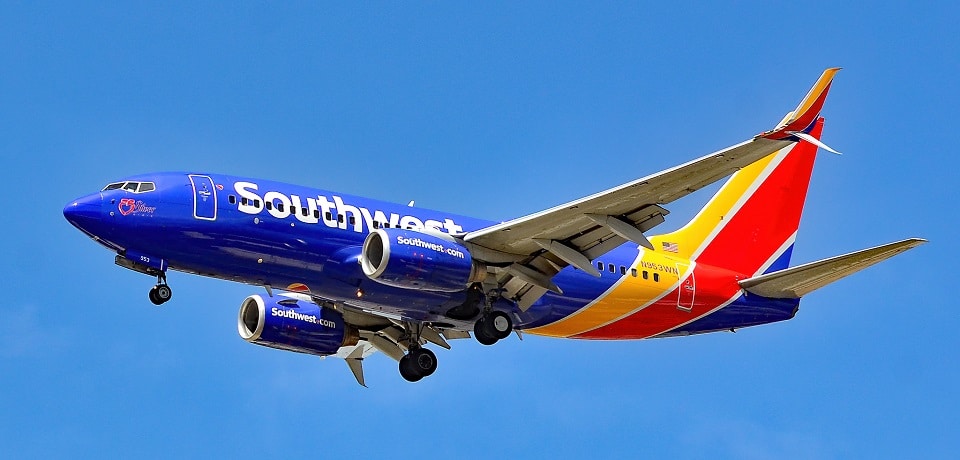
Southwest Airlines is contemplating a significant shift away from its traditional open seating policy, a move that could signal a departure from its long-standing business model.
The potential change, which would introduce assigned seating and premium seat options, is being considered to appeal to a younger demographic of travelers. This adjustment would mark one of the most substantial alterations for the carrier since its inception in 1971.
Unlike its competitors who have embraced premium seating offerings, Southwest has stuck to its open seating approach, albeit providing the option for early boarding at a fee. However, with rivals like United Airlines witnessing revenue growth from premium seating, Southwest is reevaluating its strategy. According to Forbes, the airline industry has seen a shift in customer preferences over time, prompting Southwest to reconsider its seating model designed during an era of lower load factors.
While Southwest CEO, Jordan,told to CNBC that he has neither confirmed nor denied the possibility of premium seating, he acknowledges that the company is exploring various options. He emphasized that while it’s still early in the decision-making process, the initial results are promising, hinting at potential changes in the future.
Southwest currently operates with a single economy class cabin across its all-Boeing 737 fleet, with no assigned seating. However, the airline does offer the option for early boarding for passengers to secure their preferred seats for an additional fee. Over the years, Southwest has maintained a focus on simplicity and user-friendliness in its offerings, striving to minimize costs and complexity.
In contrast, competitors like Delta and United have capitalized on revenue growth from premium seating options such as business class, demonstrating strong upsell rates. Analysts have repeatedly questioned Southwest about the potential for introducing premium seating or additional fees, although the airline has traditionally refrained from charging for the first two checked bags.
For now, the only way Southwest passengers can secure their preferred seats is by paying for an earlier boarding position, as the airline continues to operate without assigned seating, allowing passengers to choose their seats upon boarding in a predetermined order.

